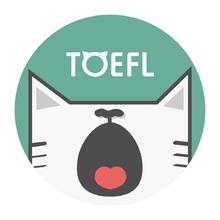 返回
教育头条
返回
教育头条

托福听力TPO中英文对照文本练习 托福备考
听力,听力就是要多听,与“书读百遍,其义自见”的道理一样,听得多了,自然就能听得懂了。留学监理网小编为大家整理了托福听力TPO中英文对照文本,并附有原文音频。大家一定要先自己听听,听不懂的再去看文本哦!
以下是托福听力TPO-48 Lecture 3-2中英文对照文本。
Mutualism then is a kind of symbiosis, um, a specific type of symbiotic relationship where both organisms benefit somehow.
So your book is correct. Now, I want to make it clear that, um,
the positive result from being in a mutualistic relationship doesn’t have to be equal for both organisms.
It’s not a one-to-one ratio here, is everyone with me so far
Symbiosis, general term; mutualism, a narrower or more specific kind of symbiosis.
Okay. Now, let’s take a close look at mutualistic relationships, um,
I’ll start off by describing a case of mutualism that involves a certain butterfly species found in South Africa and Australia.
It’s a good example of how dependence on a mutualistic relationship can vary.
OK, there’s this butterfly family and I’ll spare you the fancy Latin name because it is not important for our purposes here.
Uh, I’ll call them Coppers and Blues, well, because most members of this family have blue or copper colored wings.
I think this is one of the most interesting cases of mutualism,
these butterflies require the presence of ants to complete their life cycle, their interaction with ants is obligatory.
而互惠共生也是一种共生关系,一种具体类型的共生关系,在这种关系中两种生物在某种程度上都有所受益。
所以你看的书也没错。我要说清楚的是,这种共生关系中产生的积极结果对两种生物来说不一定是平等的。
不是一比一的,大家目前都听懂了吗?
共生关系是一种广义的术语,而互惠共生是一个狭义的或者更具体的共生类型。
我们来仔细看看互利关系,我从介绍一个互惠共生的案例开始吧,这个案例与在南非和澳大利亚发现的一种蝴蝶有关。
这在说明对互利关系的依赖程度有多么不同方面是个很好的例子。
有一个族群的蝴蝶,这个蝴蝶的拉丁语名字太花哨了,我就不说了,因为这对我们现在的目的不太重要。
我就叫它们蓝铜蝴蝶吧,因为大部分这种蝴蝶都有蓝色或铜色的翅膀。
我觉得这是互惠共生案例中最有趣的之一,这些蝴蝶需要有蚂蚁的参与才能完成它们的生命周期,它们与蚂蚁的互动是强制性的。

重点单词:
vary['vri]v. 变化,改变,使多样化
benefit['benifit]n. 利益,津贴,保险金,义卖,义演
interaction[.int'rkn]n. 相互作用,相互影响,互动交流
obligatory['bligtri]adj. 强制性的,义务的,必须的
butterfly['btflai]n. 蝴蝶,蝶状物,蝶泳
dependence[di'pendns]n. 依赖,信赖,上瘾
species['spi:iz]n. (单复同)物种,种类
presence['prezns]n. 出席,到场,存在
spare[sp]adj. 多余的,闲置的,备用的,简陋的
specific[spi'sifik]adj. 特殊的,明确的,具有特效的
以下是托福听力TPO-48 Lecture 3-2中英文对照文本。
Mutualism then is a kind of symbiosis, um, a specific type of symbiotic relationship where both organisms benefit somehow.
So your book is correct. Now, I want to make it clear that, um,
the positive result from being in a mutualistic relationship doesn’t have to be equal for both organisms.
It’s not a one-to-one ratio here, is everyone with me so far
Symbiosis, general term; mutualism, a narrower or more specific kind of symbiosis.
Okay. Now, let’s take a close look at mutualistic relationships, um,
I’ll start off by describing a case of mutualism that involves a certain butterfly species found in South Africa and Australia.
It’s a good example of how dependence on a mutualistic relationship can vary.
OK, there’s this butterfly family and I’ll spare you the fancy Latin name because it is not important for our purposes here.
Uh, I’ll call them Coppers and Blues, well, because most members of this family have blue or copper colored wings.
I think this is one of the most interesting cases of mutualism,
these butterflies require the presence of ants to complete their life cycle, their interaction with ants is obligatory.
而互惠共生也是一种共生关系,一种具体类型的共生关系,在这种关系中两种生物在某种程度上都有所受益。
所以你看的书也没错。我要说清楚的是,这种共生关系中产生的积极结果对两种生物来说不一定是平等的。
不是一比一的,大家目前都听懂了吗?
共生关系是一种广义的术语,而互惠共生是一个狭义的或者更具体的共生类型。
我们来仔细看看互利关系,我从介绍一个互惠共生的案例开始吧,这个案例与在南非和澳大利亚发现的一种蝴蝶有关。
这在说明对互利关系的依赖程度有多么不同方面是个很好的例子。
有一个族群的蝴蝶,这个蝴蝶的拉丁语名字太花哨了,我就不说了,因为这对我们现在的目的不太重要。
我就叫它们蓝铜蝴蝶吧,因为大部分这种蝴蝶都有蓝色或铜色的翅膀。
我觉得这是互惠共生案例中最有趣的之一,这些蝴蝶需要有蚂蚁的参与才能完成它们的生命周期,它们与蚂蚁的互动是强制性的。

重点单词:
vary['vri]v. 变化,改变,使多样化
benefit['benifit]n. 利益,津贴,保险金,义卖,义演
interaction[.int'rkn]n. 相互作用,相互影响,互动交流
obligatory['bligtri]adj. 强制性的,义务的,必须的
butterfly['btflai]n. 蝴蝶,蝶状物,蝶泳
dependence[di'pendns]n. 依赖,信赖,上瘾
species['spi:iz]n. (单复同)物种,种类
presence['prezns]n. 出席,到场,存在
spare[sp]adj. 多余的,闲置的,备用的,简陋的
specific[spi'sifik]adj. 特殊的,明确的,具有特效的
托福听力TPO中英文对照文本练习 托福备考,如果你喜欢这篇文章,请将其保留版权转载。我的微信号(18560125702)欢迎来咨询,10年教培行业工作经验,如果你在托福方面有疑问,请与我联系,我将为您提供全面专业的选课帮助。返回教育宝头条
【免责声明】本文仅代表作者本人观点,与教育宝无关。教育宝对文中陈述、观点判断保持中立,不对所包含内容的准确性、可靠性或完整性提供任何保证。请读者仅作参考,特此声明!





